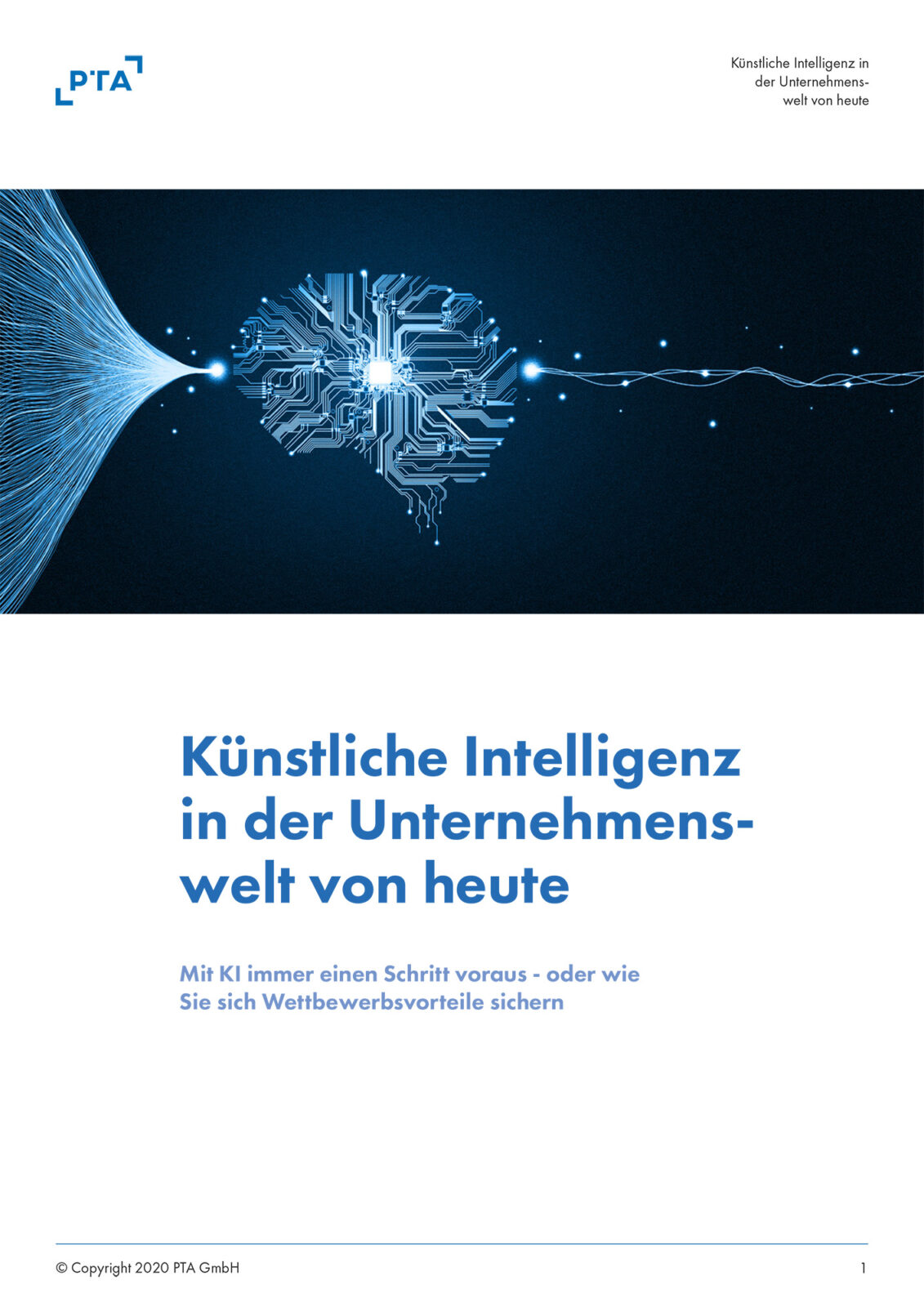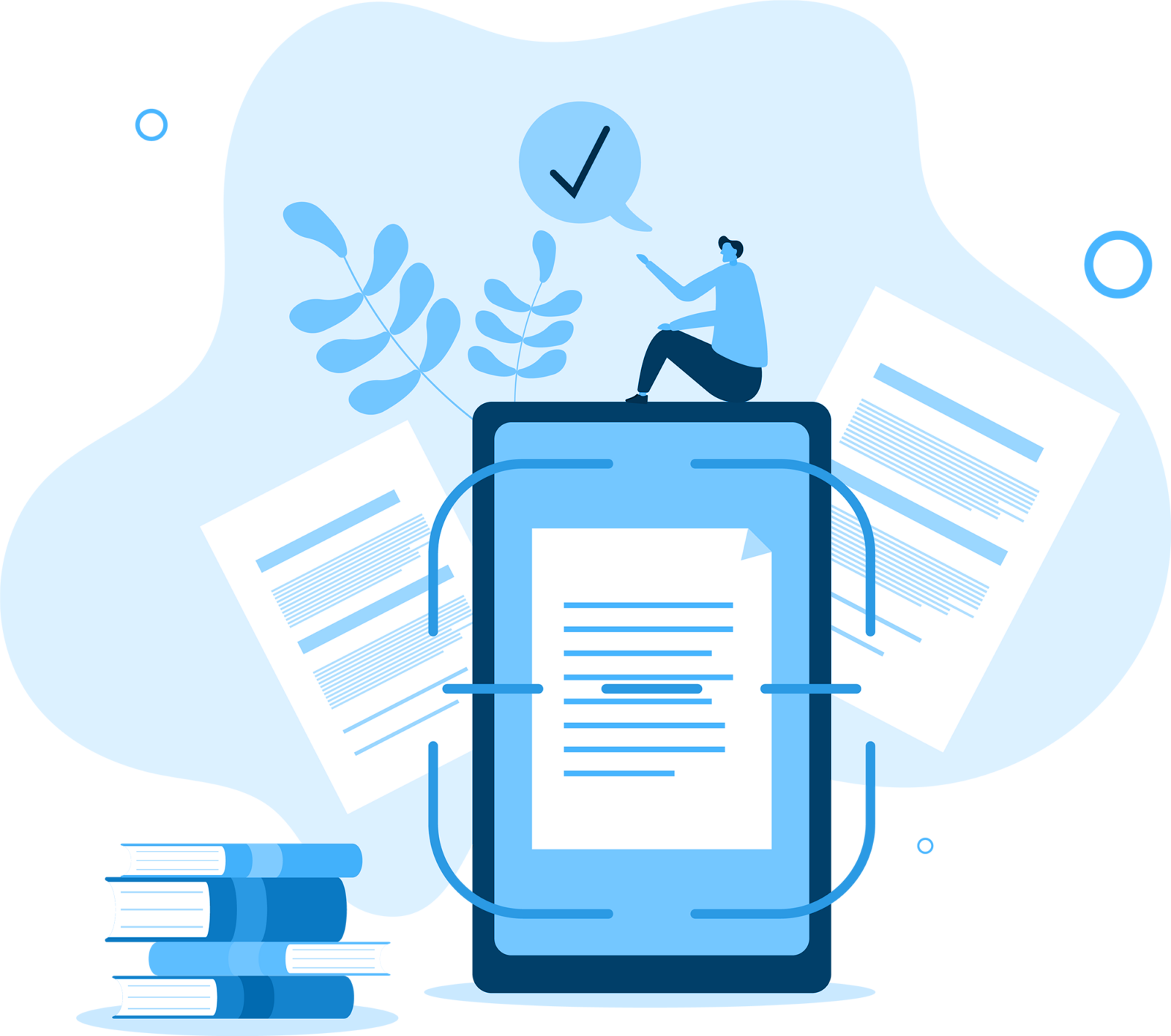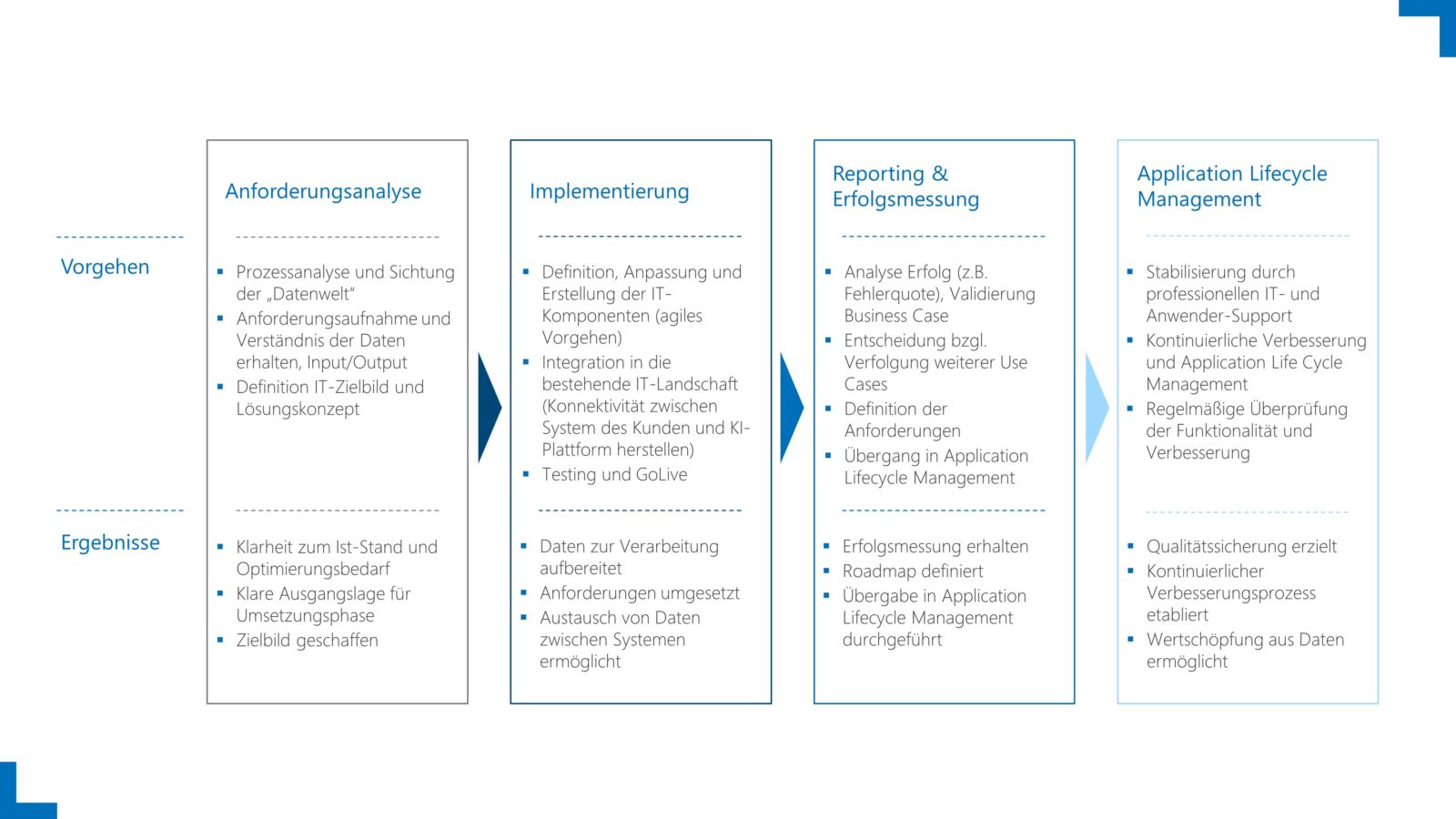The term “game changer” is often used in connection with artificial intelligence (AI).
Anyone who is involved in the topic is certainly aware that this is perfectly true.
But what exactly is artificial intelligence and why is it worthwhile for company managers to look into the use of AI in their own company?
What added value do companies receive and where does this pioneering technology reach its limits? We get to the bottom of these questions. Numerous companies have long recognized the potential of artificial intelligence. They are now using powerful AI approaches for process optimization, digitalization and automation of their service areas or for the development of new products, for example. Nevertheless, AI technologies are far more than just a game: companies that shy away from using artificial intelligence are at a competitive disadvantage.
This is because AI will fundamentally change the world of work and the way companies operate.

AI - a game changer at all levels
Sophisticated AI models use numerous methods
Artificial intelligence can easily be understood as a concept of machines that reason, plan, learn and interpret language in a similar way to humans. Although experts predict that machines will not be able to keep up with human intelligence in the near future, artificial intelligence (AI) will nevertheless have a significant impact on our everyday lives and change them.
Machine learning (ML) technology is the driving force behind AI. The aim of this is to reduce work and make us humans more productive. However, machine learning is by no means the only technical development that is making AI solutions a reality. Other methods such as natural language processing (NLP), deep learning (DL) and reinforcement learning (RL) are also used in AI models. Which technology is used is determined by the respective use case that a company wants to map.

Diverse areas of application for artificial intelligence
The potential applications and benefits of AI for companies are manifold.
Artificial intelligence can be used along the entire value chain.
As the possible applications are wide-ranging, we will focus on customer experience management as an example. In this environment, you will benefit particularly from AI in the following areas, among others:
Evaluate your leads in future using clearly defined KPIs (key performance indicators).
The closer a new lead comes to existing customers with the best value, the higher its rating will be.
AI systems open up completely new possibilities for you here.
The use of artificial intelligence can revolutionize data analysis in sales.
It allows you to concentrate on the really promising leads – those with the best scores. Overfilled sales pipelines are now a thing of the past. Instead, your pipeline becomes more valuable in the truest sense of the word and you can focus your sales activities on the most promising leads.
With the use of artificial intelligence, companies can identify new sales opportunities in a matter of seconds.
Using sophisticated AI technology, you can analyze historical data sets and identify similar patterns.
This allows you to proactively provide your customers with tailored offers even before they actively search for them.
Increase your conversion rate by using artificial intelligence to define target groups based on valuable insights. How does it work? AI is used to analyze targeted data on the interests of users who have already converted in your online store.
Artificial intelligence makes it possible to efficiently evaluate large amounts of user data and gain meaningful insights from it.
This makes it possible to identify patterns and similarities in the preferences and behavior of shoppers.
These findings form the basis for targeted segmentation.
Customer loyalty today means recognizing and solving potential problems before they escalate.
This is exactly where proactive customer service comes in.
By using artificial intelligence, potential difficulties can be identified and resolved at an early stage, even before the customer becomes aware of them.
Increase customer loyalty by using artificial intelligence for automated decision-making in customer service.
AI systems analyze historical data and make quick and precise decisions on this basis.
Your customer receives a quick and targeted response to their request, while you save manual work steps, time and costs.
Thanks to artificial intelligence, customer dialogs in the service area or speeches by a board member to customers and business partners are possible around the clock, seven days a week. An avatar does not have fixed working hours. With this in mind, we have NEXOVI, our digital video consulting assistantdeveloped. The dialog with the artificial counterpart feels like a conversation with a real person.
This is made possible by our developers classifying all dialogs using deep learning and conversational AI. In this way, a dialog structure tree is created, which can predict the dialog path as well as the contents via probabilities. This allows the new digital avatar to provide the user with individual offers and assistance.
No two advisory sequences are the same.
Artificial intelligence provides support in day-to-day business, raises customer loyalty to a new level and relieves the burden on staff – an unbeatable competitive advantage against the backdrop of a shortage of skilled workers.
With our solution for Intelligent Document Processing (IDP) you pave the way for digital, document-related workflows. Using IDP, you can convert scanned documents such as invoices, ID cards, payslips, PDF files or even insurance contracts into categorized and machine-readable formats.
This eliminates the need for manual transcription of these documents.
The tool is characterized by a user-friendly interface and can be operated without in-depth IT skills. The extraction of information can be fully automated using IDP. Artificial intelligence technologies such as Machine Learning (ML), Natural Language Processing (NLP), Optical Character Recognition (OCR), Intelligent Character Recognition (ICR) and workflow automation are used.
These mimic human abilities when identifying, classifying and processing documents.
But our IDP solution can do even more: interference, image effects and rotations can be easily removed. We adapt the OCR engine used to your exact requirements. Our IDP solution also reliably checks the accuracy of read-out data such as addresses.
It can be easily integrated into your existing IT infrastructure via a flexible API.
In addition, documents can be automatically imported from various sources such as Dropbox or Google Drive.
Our IDP solution is also POC-ready.
We will be happy to provide you with a demo system as soon as possible.
Where the use of artificial intelligence is particularly worthwhile
Predictive maintenance
Lead scoring
Opportunity scoring
Data Cleansing
Data Enrichment
Download our white paper on artificial intelligence
To give you further in-depth insights into the topic of artificial intelligence, we recommend our white paper entitled “Artificial intelligence in today’s corporate world”. Find out how you can stay one step ahead with AI. Simply click here to download:


Our AI partner network speaks for itself
As an experienced specialist in the implementation and integration of artificial intelligence, PTA GmbH has a team of highly qualified AI experts, data scientists, business analysts, requirements and data engineers as well as project managers. For the successful implementation of AI projects and AI-supported services, we rely on the products of well-known partners and a closely interlinked network. Our approach is characterized by individual, vendor-independent consulting in order to find, introduce and productively implement the right AI solution for you.
We expand your existing IT landscape in a targeted manner and attach great importance to quality and reliability.
Together with you, we analyze whether data is available in sufficient quality and quantity and how artificial intelligence can be optimally integrated into the software development and into the existing application architecture.
To ensure that you can operate your AI system sustainably, continuous updating and readjustment is essential.
The daily data from your business operations offers the opportunity to improve the AI model through continuous learning.
All of this requires processes and tools that go far beyond simply creating a solution with artificial intelligence.
We use modern AI tools such as TensorFlow, a framework for data stream-oriented programming in the ML environment, or PyTorch, an open source program library for Python geared towards machine learning.
Benefit from our successful partnerships in the AI environment and secure yourself a place in the front row when it comes to artificial intelligence.
Put your trust in our expertise and let us work together to advance your company with pioneering AI solutions.
We work with the following providers on a basis of trust:
The SAP Cloud Platform offers a whole range of services based on artificial intelligence.
With SAP AI Business Services, companies can exploit the full potential of machine learning and AI functions to generate added value for themselves and their customers.
These services can be used across all areas of the company as required.
You benefit from reusable services that can be easily integrated into the existing IT landscape.
Manual routine activities can also be reduced through the use of artificial intelligence.
You can find further information on the SAP website.
Salesforce Artificial Intelligence, also known as Einstein, offers a whole range of intelligent services that allow you to focus on what’s most important: Your customers. Recognize hidden opportunities in your business data with Einstein and derive trends and patterns that point the way ahead. The AI-supported platform enables you to quickly and efficiently create applications for your employees and customers that are based on artificial intelligence.
Einstein has a wide range of possible applications and covers a broad spectrum:
- Einstein Discovery
- Einstein Prediction Builder
- Einstein Next Best Action
- Einstein Language
- Einstein Bots
- Einstein Vision
- Einstein Voice
You can find out more about the many options offered by Salesforce Einstein AI on the Salesforce website.
With its AI platform, Microsoft Azure offers a wide range of proven, secure and versatile functions in the field of artificial intelligence.
With Azure , companies can develop critical solutions that mimic intelligent human behavior, such as image analysis, language understanding and data-based predictions.
Regardless of the specific requirements, this AI offers suitable application scenarios for every company.
Azure AI offers you these bundled possibilities:
- Develop your individual AI solutions without any expert knowledge: By linking AI functions with machine learning and your own apps and using tools and frameworks for collaboration, models can be created more quickly.
- Integrate artificial intelligence into business-critical applications and make your company fit for the most demanding workloads.
- Use responsible artificial intelligence by reliably interpreting behaviors and reducing bias in your AI systems.
This gives you full control without compromising on data protection, accountability and compliance.
With Azure Cognitive Services, pre-trained models make artificial intelligence instantly accessible to any developer without the need for in-depth AI or data science knowledge. You benefit from a comprehensive variety of domain-specific AI functions to easily apply artificial intelligence in a wide range of scenarios. Individual developments can be optimized with the first AI services that achieve human-like performance in machine vision, speech and speech recognition.
The provision of cognitive services is also very flexible: With the help of containers, these are available anywhere as required, whether in the cloud or at the intelligent edge.
This means that information can be analyzed close to the real world at any time and real-time insights can be gained, making companies extremely responsive.
Read more about the powerful features of Azure AI and Azure Cognitive Services.
Google Dialogflow CX is a powerful virtual agent that uses artificial intelligence to conduct concurrent conversations with end users.
Thanks to Natural Language Understanding (NLU), the agent even understands the nuances of human language and can therefore respond in a natural way.
The latest innovations in the field of conversational AI enable the use of avatars based on Google Dialogflow CX for complex interactions with customers in numerous fields of application.
With Dialogflow CX, Google provides artificial intelligence that supports you in building sustainable customer relationships.
The service avatar learns to recognize the context of customer conversations and react accordingly.
This creates a unique customer experience: once the digital helpers have learned to understand your customers’ intentions and requests and extract important information, they serve as patient assistants for interaction with your company.
Learn more about other features and options that Google Dialogflow offers. features and options that Google Dialogflow CX offers.
Today, digital assistants are used in many business sectors to engage in dialog with customers and provide professional support.
These assistants now use advanced AI models that appear human.
Our partner IBM develops software and hardware to enable smooth, cloud-native development and the use of basic models for artificial intelligence in companies.
In this context, IBM Watson provides a powerful platform that focuses on the development of digital assistants.
IBM Watson solutions and the associated APIs understand all forms of data, identify business-critical insights and utilize the full potential of cognitive computing.
The special feature: IBM Watson can be used to develop chatbots and virtual agents that answer customers’ questions quickly and efficiently and continuously learn through artificial intelligence.
With Watsonx, IBM is designing a new, powerful AI and data platform that enables you to multiply the impact of artificial intelligence for your business.
The platform consists of three central components:
- the watsonx.ai studio for new foudation models, generative AI and machine learning,
- the fit-for-purpose store watsonx.data for the flexible use of data lakes and to fully utilize the power of data warehouses
- and the watsonx.governance toolkit to enable AI workflows that are designed to be responsible, transparent and explainable.
IBM Watson products open up new levels of productivity by seamlessly integrating artificial intelligence and automation into core business workflows. You can find out more about the modern AI solutions from IBM and IBM Watson on the IBM website.
How we implement artificial intelligence in your company
At PTA GmbH, the introduction of a solution based on artificial intelligence follows a methodical approach in which you, the customer, are actively involved from the outset.
Together we go through the software implementation of an AI standard solution, we usually go through four steps, which we show you in the diagram:
We also have extensive expertise in the design and implementation of individual AI solutions tailored to your specific requirements.
In such a case, we rely on CRISP-DM, a standardized standard software for the development of data mining.
This proven standard provides tried-and-tested support in structuring data mining or machine learning projects and, above all, helps to explain the data mining process in more detail and integrate it into your business processes in close consultation with you.

Recognize and exploit the full potential of AI and OCR

OCR (Optical Character Recognition), also known as text recognition or text extraction, is based on machine learning techniques to extract printed or handwritten text from various sources.
These include images, posters, street signs or product labels as well as documents such as articles, reports, forms and invoices.
Companies use OCR tools to identify text, classify business documents by topic or obtain key-value pairs within documents. This eliminates or significantly reduces the need for manual data entry. The combination of OCR and artificial intelligence opens up new possibilities for data analysis.
By extracting structured data from unstructured documents, valuable information can be obtained for decision-making.
The process automation for processing large amounts of data using OCR and AI leads to a significant increase in efficiency and accuracy in various business processes.
Digital document management with IDP
Many companies are still reluctant to switch to digital document management. This is shown by data from a survey that we conducted together with market researchers from Statista: Only just under half of the companies surveyed use digital solutions to manage their documents intelligently. The potential for increasing efficiency in this area is therefore still enormous. The reasons for this are usually complex, because if a company decides to manage its documents digitally from end to end, it has to rethink tried-and-tested processes and fundamentally change existing structures. What’s more, many companies do not even have the know-how about the opportunities offered by digital technologies. At the same time, companies are required to implement innovations and new technologies in ever shorter cycles in order to remain competitive – numerous business processes in companies are therefore increasingly technology-based. These aspects are also reflected in digital document management. Technological innovations open up a wide range of options.
Best practice: IDP tool from PTA
Our AI specialists have developed a special tool for automatically extracting information from documents, known as Intelligent Document Processing (IDP).
The artificial intelligence functionalities used are based on an OCR engine that can read information on the structure, key values and entities.
Accurate text recognition is crucial for such an IDP solution to work reliably.
To evaluate the performance of different OCR tools in a software evaluation we carried out a manual evaluation.
The following solutions were tested:
- Microsoft Azure OCR
- Google Document AI
- Salesforce OCR
- Tesseract OCR (Open Source)
The methodology: what we tested
As part of our performance test, we investigated the fundamental question of how OCR and intelligent document processing (IDP) are connected in the first place. Intelligent Document Processing uses OCR as a fundamental technology, but goes far beyond this.
By using artificial intelligence and machine learning, IDP is able to extract information on structure, key values and entities.
Form recognition using machine learning, which is based on an AI service, plays a central role here.
It was precisely this aspect that we examined and evaluated more closely in our test:
Form recognition with artificial intelligence
The form recognition OCR engine contains a version of the read model optimized for documents, while more complex tasks are solved by other models with artificial intelligence.
The selection of the appropriate model depends on the type of document to be analyzed and includes both predefined and user-defined options.
Form recognition currently supports the following predefined models:
- Read model: Extraction of text lines, words, positions, languages and handwriting from various document formats (PDF, TIFF) and image formats (JPG, PNG, BMP). The Read model is also the basic model for the other models.
- Layout model: Extraction of text, tables, selection markers and structural information from documents (PDF, TIFF) and images (JPG, PNG, BMP).
- General document: Extract text, tables, structures, key-value pairs and named entities.
- W-2 model: Extract text and important information from W-2 tax forms.
- Invoice: Extract text, selection marks, tables, key-value pairs and important information from invoices.
- Document: Extract text and important information from documents.
- ID document: Extract text and important information from driver's licenses and passports.
- Business card: Extract text and important information from business cards.
In addition to the use of predefined models, form recognition also offers the option of configuring user-defined models.
Our comprehensive AI references
When checking incoming invoices, companies often go through numerous manual steps. In addition to avoiding errors, the focus of this process is clearly on ensuring legal compliance. However, this process can be significantly optimized with the help of artificial intelligence and IDP services.
These services make it possible to digitize documents with machine and handwritten content and convert them into readable data.
By using AI-supported technologies such as OCR, information can be automatically extracted and classified from incoming invoices.
This process of digital transformation forms the basis for lean, electronic and automated incoming invoice processing.
The automated process for processing incoming invoices comprises several steps:
- Invoice receipt
- Extract and classify data
- Digitize information with the help of OCR
- Various, flexibly configurable levels of formal and personal validation
- Preparation of the payment transaction in the system only after validation
The advantages of electronic invoice processing with artificial intelligence are manifold:
- Significant cost savings through reduction of manual activities
- Error avoidance + error prevention
- Ensuring compliance with the law
Manually checking documents for existing signatures is still common practice in many companies today.
Countless employees have to check each individual document to ensure that a signature has been placed in the correct position.
With automated signature recognition using artificial intelligence, this antiquated procedure is a thing of the past and you gain back valuable time for your core tasks.
The following criteria make automatic signature recognition reliable:
- It works regardless of the number of documents, pages or the position of the signature within a page.
- It works reliably, regardless of the scan quality or resolution.
- It does not require prior preparation of the documents.
- Signed and unsigned documents can be automatically sorted into different batches or provided with corresponding labels.
Automatic signature recognition with artificial intelligence offers numerous advantages:
- Quick and easy further processing of information and documents
- Increased efficiency by eliminating manual work steps
- Improved data security and GDPR compliance
Research in our IT projects in the field of artificial intelligence
Relevant questions on artificial intelligence
What advantages does the use of artificial intelligence offer companies?
The use of artificial intelligence in companies offers numerous benefits, including the automation of processes, the reduction of errors, higher productivity and efficiency, improved decision-making through real-time data, optimized learning processes through access to large data sets, improved customer service and high-quality lead generation.
In which areas can companies use artificial intelligence?
Companies can use artificial intelligence in various areas, such as in customer experience management, for lead scoring in the sales process, for predicting cross-selling and up-selling potential, for pattern recognition in marketing, for proactive customer service, for automated decision-making in customer service and for avatarization with AI and deep learning.
What steps need to be taken when introducing an AI solution in companies?
The introduction of artificial intelligence in companies usually involves four steps: Analysis, design, implementation and operation.
It is important to actively involve the customer from the outset and to use proven standards such as CRISP-DM to structure the data mining process and integrate it into the company’s processes.
The power and future viability of artificial intelligence are undeniable.
Companies that make use of this technology can increase their competitiveness, optimize processes and develop new products.
However, implementing AI is complex and requires specialist knowledge.
This is where PTA comes into play.
As an experienced IT service we support you in integrating AI into your company.
Our experts analyze your requirements, develop tailor-made solutions and support you during implementation.
In doing so, we rely on state-of-the-art technologies and proven methods.
Do not hesitate to contact us and discover the possibilities of artificial intelligence for your company together with us.
Together we will shape your digital future.
Contact
PTA GmbH Head Office
Weberstraße 2-4
D-68165 Mannheim
© Copyright 2024 PTA GmbH | All rights reserved | Imprint | Privacy | Legal notice | Values & Code of Conduct



